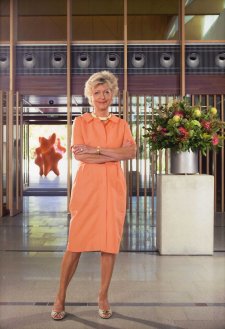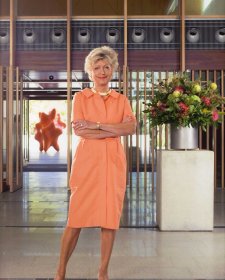- About us
- Support the Gallery
- Venue hire
- Publications
- Research library
- Organisation chart
- Employment
- Contact us
- Make a booking
- Onsite programs
- Online programs
- School visit information
- Learning resources
- Little Darlings
- Professional learning
Emily Kame Kngwarreye (c. 1910–1996) is one of Australia's most significant artists. An Anmatyerre woman, Kngwarreye was born at Alhalkere, Utopia Station in the Northern Territory. After her ancestral land was appropriated for cattle grazing, she worked as a stockhand. As she grew older she became a leader in Awelye (women's business), experienced in ceremonial body painting. A founding member of the Utopia Women's Batik Group, Kngwarreye began to paint on canvas late in life, in 1988. She held her first solo exhibition in 1990 at Utopia Art Sydney, and her popularity grew. Her works depict the flowers, roots, dust and summer rains of her Country, the translucent colours built up with layered touches of paint to create an illusion of depth and movement. After her death in 1996, Kngwarreye's work represented Australia at the 1997 Venice Biennale, and in 1998 a retrospective exhibition travelled to three state galleries and the National Gallery of Australia. Ten years later Utopia: The Genius of Emily Kame Kngwarreye showed in Japan. With that exhibition, Kngwarreye was recognised as one of the very greatest abstract artists of the twentieth century.
Greg Weight's photograph of Kngwarreye at Alhalkere captures the artist working on one of the thousands of canvases created throughout her short but brilliant career.
Gift of Patrick Corrigan AM 2004. Donated through the Australian Government's Cultural Gifts Program.
© Gregory Weight/Copyright Agency, 2024
Patrick Corrigan AM (130 portraits)



On one level The Companion talks about the most famous and frontline Australians, but on another it tells us about ourselves.



Greg Weight on working with Jiawei Shen, and starting out as a photographer.



Portraits of philanthropists in the collection honour their contributions to Australia and acknowledge their support of the National Portrait Gallery.